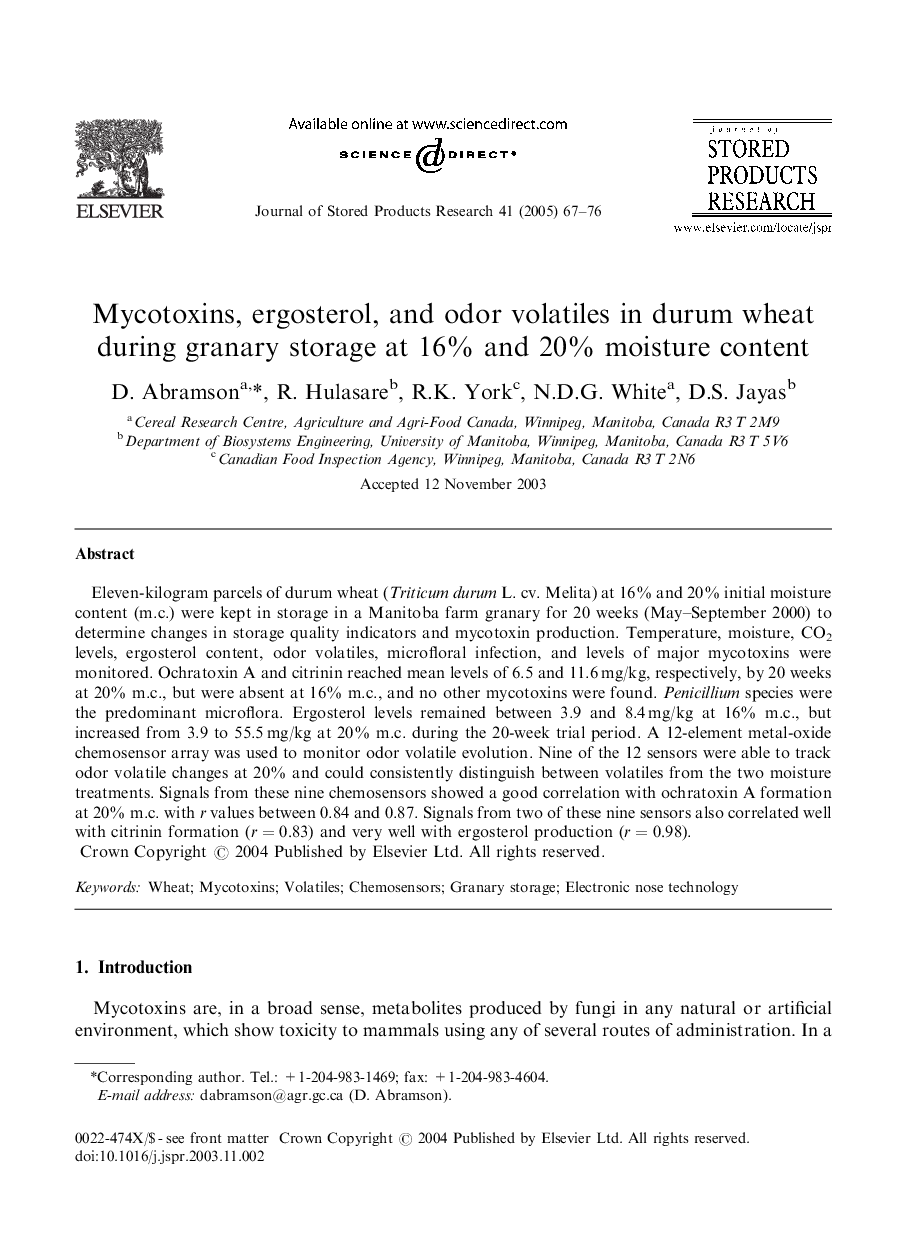| Article ID | Journal | Published Year | Pages | File Type |
|---|---|---|---|---|
| 9474925 | Journal of Stored Products Research | 2005 | 10 Pages |
Abstract
Eleven-kilogram parcels of durum wheat (Triticum durum L. cv. Melita) at 16% and 20% initial moisture content (m.c.) were kept in storage in a Manitoba farm granary for 20 weeks (May-September 2000) to determine changes in storage quality indicators and mycotoxin production. Temperature, moisture, CO2 levels, ergosterol content, odor volatiles, microfloral infection, and levels of major mycotoxins were monitored. Ochratoxin A and citrinin reached mean levels of 6.5 and 11.6Â mg/kg, respectively, by 20 weeks at 20% m.c., but were absent at 16% m.c., and no other mycotoxins were found. Penicillium species were the predominant microflora. Ergosterol levels remained between 3.9 and 8.4Â mg/kg at 16% m.c., but increased from 3.9 to 55.5Â mg/kg at 20% m.c. during the 20-week trial period. A 12-element metal-oxide chemosensor array was used to monitor odor volatile evolution. Nine of the 12 sensors were able to track odor volatile changes at 20% and could consistently distinguish between volatiles from the two moisture treatments. Signals from these nine chemosensors showed a good correlation with ochratoxin A formation at 20% m.c. with r values between 0.84 and 0.87. Signals from two of these nine sensors also correlated well with citrinin formation (r=0.83) and very well with ergosterol production (r=0.98).
Related Topics
Life Sciences
Agricultural and Biological Sciences
Agronomy and Crop Science
Authors
D. Abramson, R. Hulasare, R.K. York, N.D.G. White, D.S. Jayas,
